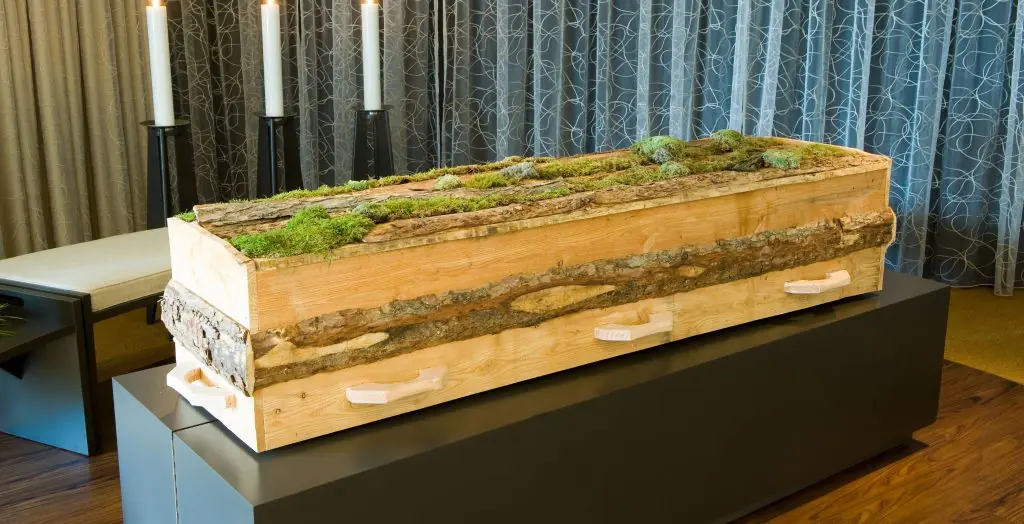
Over the past few years, there has been a growing trend towards choosing cremation as a preferred option for end-of-life arrangements. It offers a unique and often more affordable alternative to traditional burial, providing individuals and families with various options for memorialising their loved ones.
Swanborough Funerals, a distinguished provider of funeral services in Browns Plains, Australia, is committed to guiding individuals through this process with compassion and care. This blog aims to provide a comprehensive and step-by-step guide to the cremation process, shedding light on its simplicity and addressing the reasons behind its growing popularity.
How does Cremation Work?

The cremation process is a method of final disposition where the deceased’s body is reduced to ashes through the application of intense heat. This procedure commonly occurs within a dedicated facility specifically designed for this purpose, commonly referred to as a crematorium. The fundamental principle underlying cremation is using heat to break the body into its basic elements. While this might sound complex, the process is straightforward and involves several key steps.
Step-by-Step Process of Cremation:

1. Collection and Preparation of the Deceased
The first step in the cremation process is the respectful and dignified collection of the deceased from the place of death. At Swanborough Funerals, this is done with the utmost sensitivity, ensuring that the grieving family feels supported during this difficult time. Once the deceased is at the crematorium, they are prepared for the cremation process.
2. Identification and Paperwork
Before proceeding with cremation, strict protocols are followed to ensure accurate identification. Proper documentation is also completed, adhering to legal requirements and allowing for a smooth and organised process.
3. Placement in the Cremation Chamber
The deceased is then placed in a specially designed cremation chamber. This chamber is constructed to withstand high temperatures, creating an environment conducive to the breakdown of the body. The chamber is sealed, and the process begins.
4. Application of Intense Heat
Intense heat, generally falling between 760 to 982 degrees Celsius, is employed within the cremation chamber. This intense heat initiates combustion, reducing the body to bone fragments.
5. Cooling and Processing of Ashes
After the cremation process, the remaining bone fragments are allowed to cool before being processed into a finer substance. This substance is what we commonly refer to as “ashes.”
6. Ashes Collection and Finalisation
The processed ashes are carefully collected, placed in a cremation urn, and handed over to the family. Swanborough Funerals understands the significance of this moment and ensures that the ashes are handled with the utmost respect and care.
How Does Cremation Work in Australia?

In Australia, the cremation process follows a standard set of procedures regulated by state and territory laws. The process is designed to be transparent, efficient, and by cultural and religious preferences. Swanborough Funerals, as a leading provider of funeral services in Browns Plains, adheres to these regulations while maintaining a compassionate and personalised approach.
Cremation Services in Australia involve meticulous record-keeping and documentation to ensure accuracy and compliance. Each process step is carried out with the utmost professionalism, respecting the wishes and cultural considerations of the deceased and their family.
Simple Explanation of Cremations

A simple explanation of cremation involves understanding the transformation of the body into ashes through the application of heat. The deceased is respectfully collected, identified, and prepared for the process. Intense heat is applied once inside the cremation chamber, reducing the body to bone fragments. After cooling and processing, the ashes are collected and presented to the family in a cremation urn. This straightforward process allows for a dignified and meaningful final disposition.
What Are the Steps Involved in a Cremation?

The process of cremation can be broken down into several distinct steps, each crucial in ensuring a respectful and efficient procedure:
1. Preparation and Collection
The initial step in the cremation process involves the respectful collection and preparation of the deceased. Swanborough Funerals ensures this process is conducted with the utmost sensitivity and dignity.
The deceased is carefully prepared for the journey to the crematorium, and proper identification measures are taken to guarantee accuracy throughout the procedure. This phase is crucial in establishing a foundation of respect and compassion, setting the tone for the rest of the cremation process.
2. Documentation
Once at the crematorium, meticulous documentation is undertaken. This includes the completion of necessary paperwork and obtaining permits and certificates mandated by local authorities.
Swanborough Funerals ensures that all legal requirements are met, facilitating a smooth and compliant cremation process. This attention to detail ensures legal compliance and offers peace of mind to the grieving family, understanding that each facet is being managed meticulously and with a high level of care.
3. Cremation Chamber Placement
After the documentation is complete, the deceased is placed in the specially designed cremation chamber. This chamber is constructed to withstand the intense heat required for cremation.
Swanborough Funerals ensures that this step is executed precisely, maintaining the deceased’s dignity throughout the process. The sealed chamber marks the beginning of the transformation from a physical body to ashes, a process conducted in an environment designed for utmost respect and professionalism.
4. Application of Heat
The cremation process’s core involves applying intense heat within the sealed chamber. Temperatures typically range from 760 to 982 degrees Celsius. This extreme heat initiates combustion, breaking the body into bone fragments.
Swanborough Funerals takes great care to ensure this step is carried out efficiently, respecting the deceased and adhering to all safety protocols. The controlled application of heat is a crucial element in transforming the body into ashes, marking a significant stage in the cremation process.
5. Cooling and Processing
Following the completion of the cremation process, the remaining bone fragments are allowed to cool. Swanborough Funerals recognises the sensitivity of this phase and ensures that the cooling and processing are conducted with care and respect.
This step is essential in preparing the ashes for their final presentation to the family. The cooling process symbolises the culmination of the physical transformation, setting the stage for the subsequent collection and handling of the ashes.
6. Ashes Collection and Finalisation
The final step involves the careful collection of the processed ashes. Swanborough Funerals takes great care in handling the ashes, placing them in a designated cremation urn. This urn is then presented to the family, marking the conclusion of the cremation process.
The handing over of the ashes is a poignant moment, and Swanborough Funerals ensures that it is conducted with the utmost compassion and consideration for the grieving family’s emotions. This finalisation step completes the cremation process, providing the family with the remains of their loved one in a dignified and respectful manner.
Why is Cremation a Popular Choice?

The growing preference for cremation can be ascribed to a multitude of factors, reflecting changing attitudes and preferences regarding end-of-life arrangements:
1. Flexibility in Memorialisation
Cremation provides greater flexibility in choosing how to memorialise a loved one. Families can scatter ashes in meaningful locations, keep them in an urn, or even incorporate them into memorial jewellery or art.
2. Environmental Considerations
Some individuals opt for cremation due to environmental concerns. It is perceived as a more eco-friendly alternative to traditional burial, requiring less land and avoiding embalming chemicals.
3. Cultural and Religious Acceptance
Cremation has become more widely accepted across various cultures and religions. Many religious denominations that once opposed cremation now permit it, contributing to its growing popularity.
4. Simplicity and Efficiency
The cremation process is generally simpler and more time-efficient than traditional burial. This can appeal to those who prefer a streamlined and less complex approach to end-of-life arrangements.
Conclusion
The cremation process in Australia, as exemplified by Swanborough Funerals, follows a well-defined and respectful series of steps. Each stage is conducted with professionalism and compassion, from the collection and preparation of the deceased to the finalisation of ashes. The popularity can be attributed to its cost-effectiveness, flexibility in memorialisation, environmental considerations, and the evolving acceptance of cremation across different cultures and religions. As individuals seek personalised and meaningful ways to commemorate their loved ones, cremation continues to be a prominent choice in the realm of end-of-life arrangements. Swanborough Funerals, with its commitment to guiding families through this process, plays a crucial role in ensuring a dignified and compassionate farewell for the departed.
 "/>
"/>
